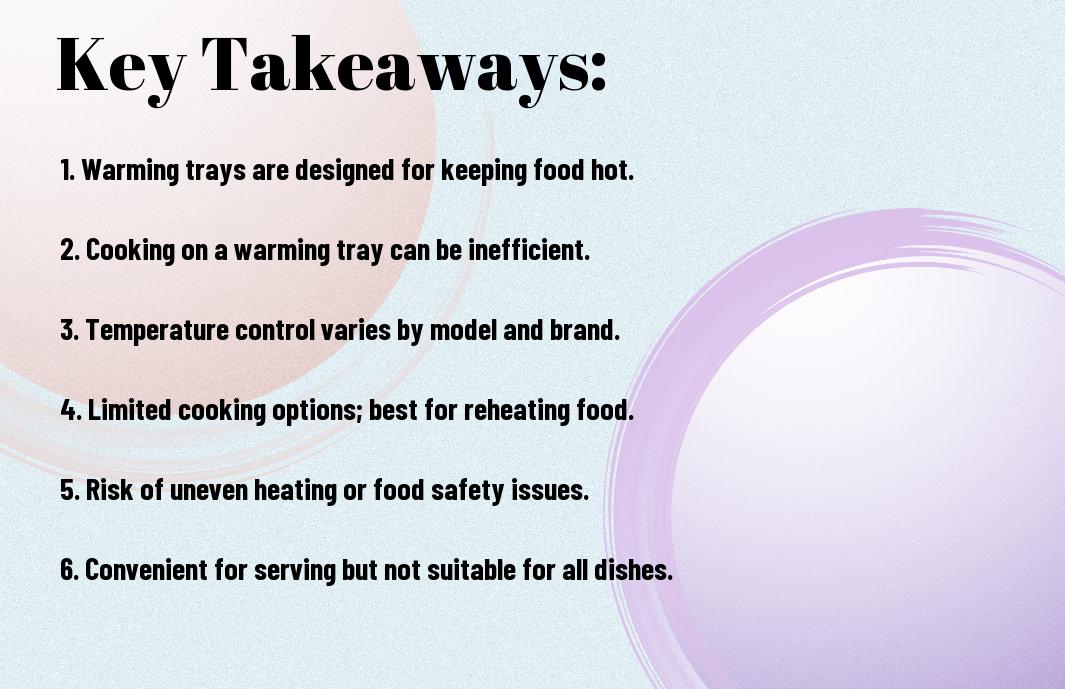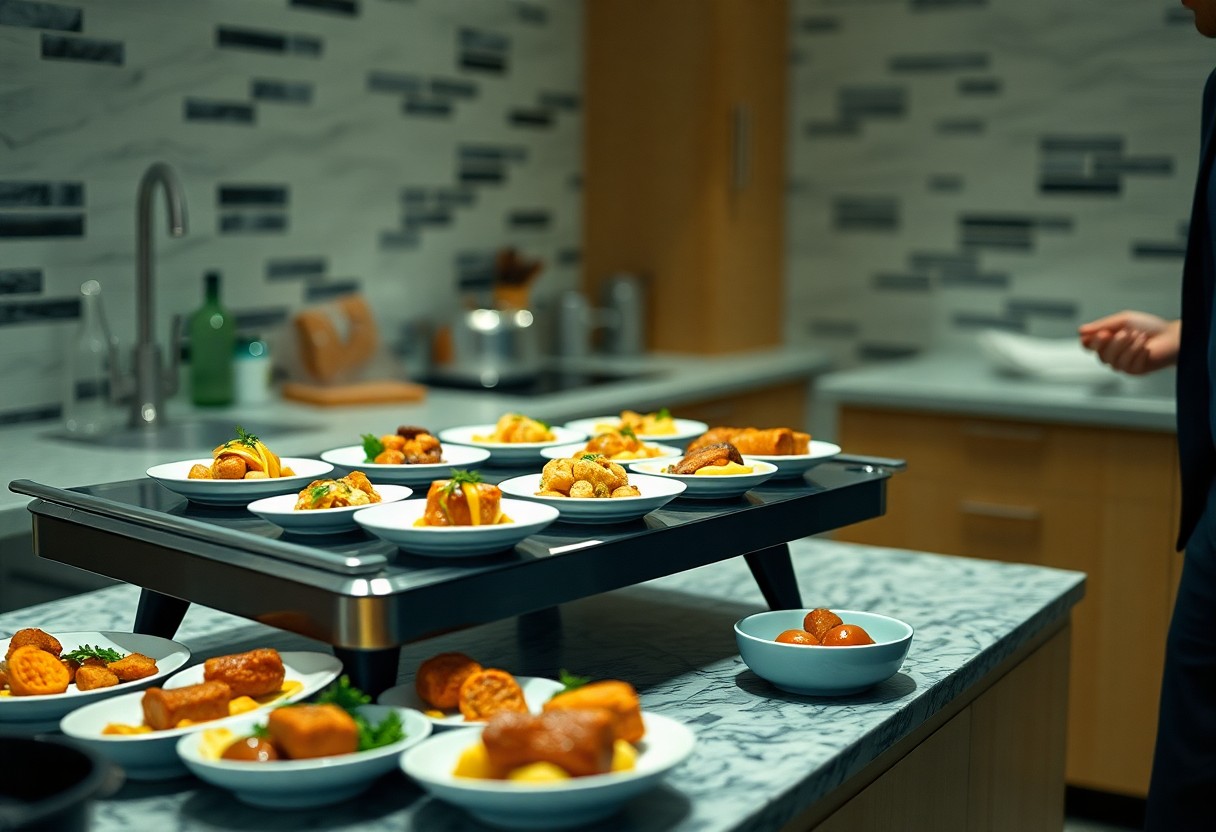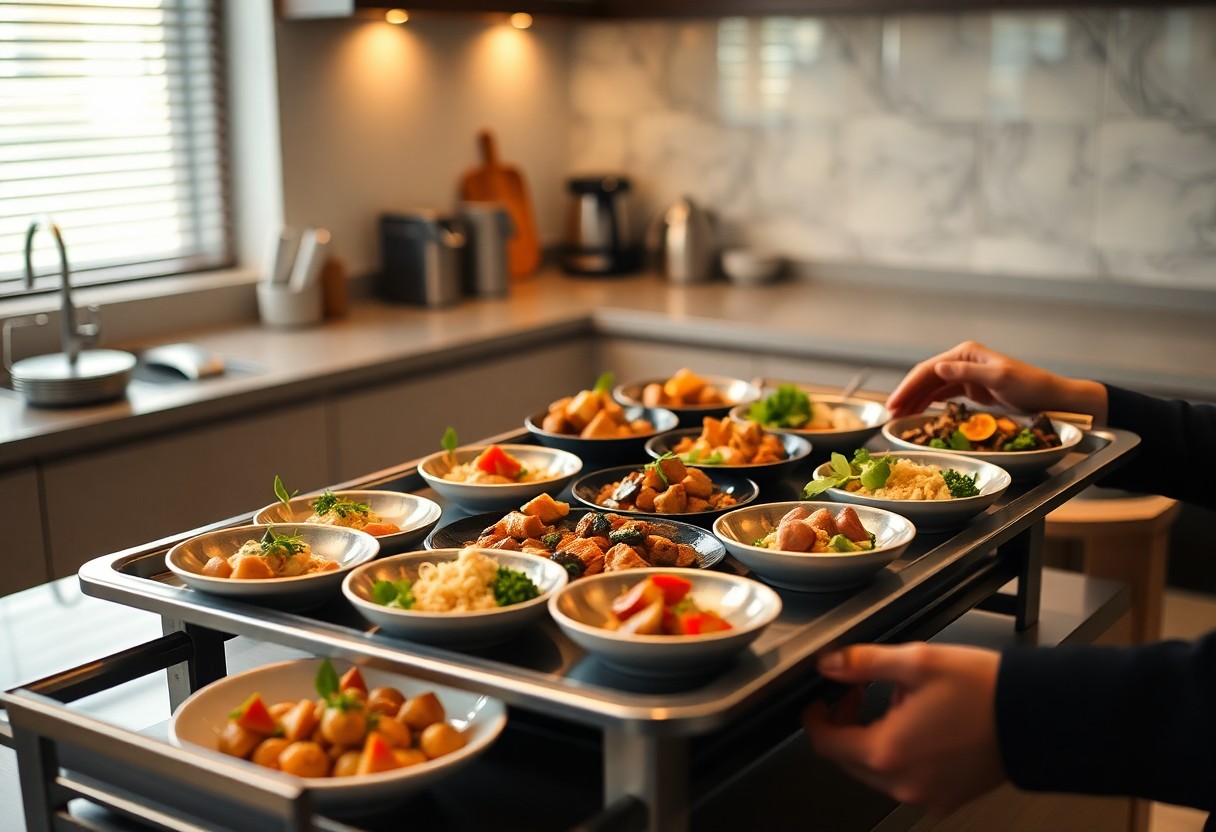Just because a warming tray is designed primarily for keeping food warm doesn’t mean it can’t serve additional functions in your kitchen. You may wonder if you can cook on a warming tray and what that entails. While it offers the potential for gentle heating and may help in simmering, there are also risks involved, such as inadequate temperature control or uneven cooking. In this post, we’ll explore the pros and cons of using a warming tray for cooking to help you make an informed decision.
Key Takeaways:
- A warming tray is designed primarily to keep food warm rather than to cook it, which means it may not reach the necessary temperatures to thoroughly cook raw ingredients.
- Using a warming tray can help maintain the temperature of pre-cooked dishes, making it a useful tool for serving food at gatherings or buffets.
- Cooking on a warming tray can lead to uneven heating and may not be suitable for all types of foods, so it’s important to consider safety and quality when attempting to cook this way.
Understanding Warming Trays
The warming tray is an appliance designed to keep food warm without cooking it. Utilizing low heat settings, it maintains the temperature of your dishes, making it ideal for buffets, parties, or family gatherings. Rather than cooking food, warming trays are perfect for ensuring that your meals are served hot and fresh, enhancing your dining experience.
Definition and Functionality
About warming trays: they are electric appliances that offer a simple method to maintain food at an optimal serving temperature. Typically featuring a flat, heated surface, they can accommodate a variety of dishes, ensuring that your food remains edible and enjoyable for longer periods. Unlike traditional cooking appliances, warming trays do not actually cook food; they merely achieve a warm, inviting temperature.
Types of Warming Trays
In fact, there are several types of warming trays available, each designed for specific uses and settings. Understanding these types will help you choose the right one for your needs:
| Electric Warming Trays | Plug in and heat food with adjustable temperature controls. |
| Stovetop Warming Trays | Use direct heat from your stove to keep dishes warm. |
| Portable Warming Trays | Lightweight and easy to transport, perfect for gatherings. |
| Buffet Warming Trays | Accommodate multiple dishes, often featuring chafing dishes. |
| Induction Warming Trays | Use induction heating for efficient and even warmth. |
The variety and functionality of warming trays allow you to select the perfect option for your cooking and serving needs. Whether you need something for family dinners or larger events, each type caters to unique preferences and circumstances.
- Electric Warming Trays
- Stovetop Warming Trays
- Portable Warming Trays
- Buffet Warming Trays
- Induction Warming Trays
The right warming tray can significantly enhance your dining experience, ensuring that your food stays warm and enjoyable throughout your event.

Pros of Cooking on a Warming Tray
There’s no denying that a warming tray can serve as a valuable tool in your kitchen, especially when it comes to meal prep and entertaining guests. It offers an efficient way to keep dishes warm while you focus on other aspects of your cooking or preparing for an occasion. By utilizing a warming tray, you can enhance your food presentation and ensure everyone enjoys their meal at the right temperature without needing to rush through cooking.
Convenience and Ease of Use
Between busy schedules and entertaining guests, the convenience of a warming tray is undeniable. It simplifies your cooking process by allowing you to prepare meals ahead of time and keep them warm until you’re ready to serve. With minimal setup and straightforward controls, you can easily maintain a continuous heat source, making it an ideal choice for gatherings or busy weeknight dinners.
Retains Food Temperature
By using a warming tray, you can effectively retain your food’s temperature, ensuring that your dishes are served hot and ready to enjoy. This device circulates heat evenly, which is important for keeping food at a safe and desirable temperature. Below are the benefits of retaining food temperature on a warming tray:
Benefits of Retaining Food Temperature| Consistent Heat Distribution | Prevents cold spots in food. |
| Maintains Food Safety | Keeps food above the danger zone for bacteria growth. |
| Enhances Flavor | Prevents moisture loss and maintains taste. |
Further, retaining food temperature on a warming tray promotes food safety and enhances the overall dining experience. By ensuring your dishes remain warm, you minimize the risk of temperature-related issues that can lead to foodborne illnesses. Additionally, maintaining consistent heat can help preserve the flavor and texture of your food, offering your guests a delightful culinary experience. It’s imperative to actively monitor the temperature, ensuring it stays within the recommended range for optimal food quality and safety.
Cons of Cooking on a Warming Tray
Once again, it’s important to consider the drawbacks of using a warming tray for cooking. While it may seem convenient, the limitations can impact your meal quality and safety. You might find that certain cooking techniques or foods aren’t suitable for a warming tray, and there are also potential risks associated with keeping food at certain temperatures for extended periods.
Limited Cooking Capabilities
After assessing your options, you may realize that warming trays primarily serve as temperature maintenance devices rather than full-fledged cooking appliances. They lack the ability to properly boil, sauté, or sear foods, limiting your meal preparation to reheating and keeping items warm.
Risk of Food Safety Issues
Among the many challenges of cooking on a warming tray, the risk of food safety issues stands out as a major concern. Keeping food at unsafe temperatures can promote the growth of harmful bacteria.
It’s vital to ensure that your food is held at a safe temperature, typically above 140°F. If the warming tray doesn’t maintain this heat level, bacteria can multiply quickly, leading to foodborne illness. Be cautious about how long you keep your food on the tray, and always aim for proper temperature control to protect your health and your guests’.

Comparing Warming Trays to Traditional Cooking Methods
Unlike traditional cooking methods that rely on heat to prepare food, warming trays primarily maintain temperature. They serve to keep already cooked food warm rather than facilitate the cooking process. The following table illustrates the differences.
Comparison Table
| Warming Trays | Traditional Cooking Methods |
|---|---|
| Maintains temperature | Cooks food with heat |
| Limited to warming | Versatile cooking techniques |
| Energy efficient | May consume more energy |
| No direct cooking | Direct food preparation |
Efficiency and Effectiveness
An effective way to keep food warm without overcooking it is to use a warming tray. While it excels in preserving the temperature of dishes, it doesn’t replace the need for traditional cooking methods that prepare food. So, in terms of efficiency, warming trays are best suited for maintaining heat rather than cooking from scratch.
Flavor and Texture Considerations
Warming trays do not alter the flavor or texture of your food as traditional cooking does. Instead, they simply keep your already prepared meals warm until serving.
This can lead to a lack of depth and complexity in flavor, as well as a loss of optimal texture, particularly for items like pasta or vegetables, which can become mushy or dry if left on the tray too long. Eggs and meats, for example, require careful temperature control to retain their juiciness, and using a warming tray may not suffice. Therefore, relying solely on warming trays may not be the best option if you value enhanced flavor and texture in your meals.

Tips for Using Warming Trays Effectively
Your success with a warming tray relies on smart practices. Here are some tips to maximize its efficiency:
- Preheat the tray before placing food on it to ensure consistent temperatures.
- Use covered dishes to retain moisture and prevent drying out.
- Monitor the food periodically to avoid overheating and maintain the ideal temperature.
- Layer dishes of similar types to simplify heating and warming.
Thou can ensure delicious dishes by adhering to these guidelines.
Best Practices for Temperature Control
With careful temperature management, you can achieve optimal warming for any dish:
| Best Practices | Description |
|---|---|
| Keep it covered | Using lids helps maintain heat. |
| Adjust settings | Use low or medium settings for warming. |
| Check regularly | Ensure food remains at a safe temperature. |
Foods Suitable for Warming Trays
Trays can be an excellent way to keep specific foods warm for serving. Foods that benefit most include casseroles, stews, and wrapped grilled meats, which all retain moisture in a controlled environment. Dishes with sauces or gravies are especially suitable, as they stay flavorful and hot. Avoid using the warming tray for delicate items like fish or fried foods, which may lose their texture when heated for extended periods. Always prioritize food safety, ensuring that you keep food above 140°F to prevent bacterial growth.
For instance, hearty meals like pastas and their sauces thrive on warming trays, maintaining their flavor and consistency. On the other hand, you should be cautious with items like dairy-based dishes, as they can spoil if left at improper temperatures. Foods rich in liquid content will do well under low heat, while fried foods may not retain their crispiness when reheated, thereby losing their appeal. Your choice of food can significantly impact the overall success of your warming tray experience.
Summing up
Ultimately, using a warming tray for cooking comes with both advantages and disadvantages. While it can keep food at a safe temperature and is convenient for serving, it may not provide the necessary heat for proper cooking and can lead to uneven results. You should weigh these factors against your specific needs and preferences when deciding whether a warming tray is suitable for your cooking style. By considering your options, you can make an informed choice that enhances your culinary experience.
FAQ
Q: Can you actually cook on a warming tray?
A: While warming trays are designed primarily for keeping food warm rather than cooking it, they can sometimes be used for minor heating tasks. For example, you can soften butter, melt chocolate, or warm tortillas. However, trying to cook items like raw meat or fully prepare dishes on a warming tray is not safe or effective. It is imperative to use proper cooking appliances for those purposes.
Q: What are the pros of using a warming tray?
A: The advantages of using a warming tray include convenience and energy efficiency. Warming trays can keep food at a consistent temperature, making them ideal for buffets or large gatherings. They are typically easy to use, portable, and require little energy compared to traditional ovens. Additionally, they can maintain the texture and flavor of already-cooked dishes without further cooking them.
Q: What are the cons of using a warming tray?
A: One of the drawbacks of warming trays is that they do not cook food thoroughly; they only maintain temperature. Therefore, they are not suitable for reheating large or dense items as they may not reach the recommended serving temperatures. Another downside is the limited space they offer, which may not accommodate all your dishes at once during a gathering. Additionally, some trays may not provide even heating, leading to hot and cold spots in the food.
Q: Can a warming tray be used for food safety?
A: Warming trays can help keep food at safe serving temperatures (around 140°F or higher) to prevent bacterial growth. However, they should not be used to cook or reheat food from a cold state to a safe temperature. Once food has been heated properly, it can be kept on the warming tray to maintain its warmth, but any items that have been sitting out for more than two hours should be discarded to ensure food safety.
Q: Are warming trays easy to clean?
A: Cleanliness largely depends on the model and material of the warming tray. Many are designed with smooth surfaces that can be wiped down easily. However, some trays may have removable trays or surfaces that can be washed separately. Always refer to the manufacturer’s instructions for the best cleaning practices to avoid damage and ensure longevity of the appliance.
